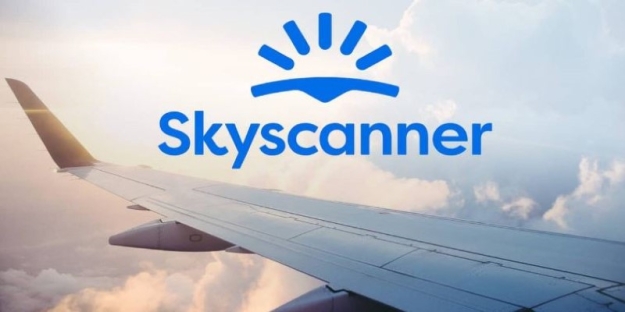The Best Time To Book Flights To Get The Lowest Price
Finding cheap flights isn’t just about luck. Airlines follow pricing patterns that reward travelers who know when and how to book. Whether you’re planning a family vacation, a business trip, or a last-minute getaway, knowing the best time to book can save you hundreds of dollars.
This guide breaks down when to book flights for domestic and international travel, the tools you should use, and strategies for snagging the lowest fares.
General Timing Rules
Domestic flights: The sweet spot is usually 1 to 3 months before departure. Prices are higher too early and climb again as the departure date approaches.
International flights: Plan farther ahead. The best deals appear around 2 to 6 months before departure, depending on the destination.
Holiday periods: For Thanksgiving, Christmas, and peak summer travel, book as early as possible—sometimes 6 to 9 months in advance. Airlines know demand is strong, so waiting rarely works in your favor.
Cheapest Days To Fly

Airlines adjust prices daily, but certain patterns hold:
- Tuesdays and Wednesdays tend to be the cheapest days to fly within the U.S.
- Saturday flights can be cheaper for international trips, while Sundays are usually the most expensive.
- Red-eye flights and early mornings often have lower fares.
If your schedule is flexible, use fare calendars from Google Flights or Skyscanner to spot the cheapest travel days.
Day Of The Week To Book
A common myth is that buying tickets on Tuesdays guarantees savings. That used to be true when airlines loaded fares once a week, but now pricing is dynamic. While Tuesday afternoons sometimes bring drops, the bigger savings come from monitoring fares over time rather than betting on a single day.
Tools like Hopper, Kayak Price Alerts, and Google Flights tracking send notifications when fares change, helping you buy at the right moment.
Seasonal Patterns
Flight prices shift with travel seasons:
- Spring and Fall: Shoulder seasons offer the best value. Fewer tourists mean lower fares and hotel prices.
- Summer: High demand, especially for Europe and beach destinations. Book at least 3 to 6 months ahead.
- Winter Holidays: Prices peak. Book 6 to 9 months out for Christmas or New Year’s trips.
- January and February: Some of the cheapest months to fly, particularly for international destinations.
If you can plan travel during off-peak periods, you’ll see the biggest discounts.
Best Times For Popular Destinations
United States
Hawaii: Book 2 to 4 months before departure. Traveling in May or September offers lower fares compared to peak summer.
Florida: For Orlando and Miami, aim for 1 to 3 months in advance. Fall travel often brings cheaper deals.
New York & Los Angeles: Prices fluctuate, but the 1-to-3-month rule generally works well.
Europe
Western Europe (Paris, London, Rome): Book 3 to 6 months before your trip. Avoid June through August if you’re looking for value.
Eastern Europe (Prague, Budapest): Similar timing, but shoulder season (April–May and September–October) can save 20–30%.
Asia
Japan: Cherry blossom season requires booking at least 6 months out. For fall, 3 to 5 months works.
Thailand: For December and January, secure tickets 4 to 6 months in advance. Shoulder months like May and September are cheaper.
Latin America
Mexico (Cancun, Cabo, Mexico City): Book 2 to 4 months ahead. Off-peak months (May and October) offer the lowest prices.
Brazil: Carnival season requires 6-month advance booking, while May–June is far cheaper.
How Far In Advance By Region?
Here’s a quick reference for average booking windows:
- Domestic U.S.: 1–3 months
- Canada & Mexico: 2–4 months
- Europe: 3–6 months
- Asia: 4–7 months
- South America: 3–6 months
- Oceania (Australia, New Zealand): 5–7 months
Tools That Help You Find The Best Price

- Google Flights lets you see fare calendars and price trends.
- Skyscanner – Good for international comparisons and showing the cheapest months.
- Hopper – Predicts price changes and alerts you when to book.
- Kayak Explore – Helps you pick destinations based on your budget and dates.
- Airline Newsletters & Apps – Carriers like Southwest, Delta, and United often release flash sales through email and app alerts.
Booking Strategies That Work
- Use Incognito Mode or Clear Cookies: While the effect is debated, some travelers notice price increases after repeated searches.
- Set Price Alerts: Always track fares before buying. Small drops can save $50–$200 per ticket.
- Consider Nearby Airports: Flying into Newark instead of JFK, or Oakland instead of San Francisco, can save a lot.
- One-Way Tickets: Sometimes booking two one-ways on different airlines is cheaper than a round trip.
- Mix and Match Airlines: Use tools like Kiwi.com or Skiplagged to combine carriers.
- Be Flexible with Dates: Shifting departure or return by a day or two can change fares dramatically.
- Book Early for Peak Travel: Don’t wait for deals during school holidays or festival seasons.
Budget Airlines Vs. Major Carriers
Low-cost airlines like Spirit, Frontier, Ryanair, and EasyJet often advertise cheap base fares, but they add fees for bags, seat selection, and even printing boarding passes. Major carriers like Delta, United, and American may cost more upfront but include more in the ticket price.
Before booking, compare total costs, not just the ticket price. Sometimes, full-service airlines end up cheaper once extras are factored in.
Mistake Fares And Flash Sales
Occasionally, airlines or booking sites publish error fares—extremely low prices caused by technical glitches. Websites like Secret Flying, Scott’s Cheap Flights (now Going), and Airfarewatchdog track these deals. They sell out fast, so subscribe to alerts if you’re flexible with destinations.
Flash sales are common, too. Southwest, JetBlue, and Alaska Airlines often launch 48-hour promotions. Signing up for airline email lists ensures you don't miss them.
Using Points And Miles
Frequent flyer miles can save you when cash fares are high. Programs like Delta SkyMiles, American AAdvantage, and United MileagePlus allow booking award tickets, especially if you plan 6 to 11 months in advance.
Flexible credit cards like Chase Sapphire Preferred or Amex Platinum make it easier to transfer points to airline partners. If you’re short on points, consider mixed bookings—using miles for one leg and paying cash for the other.
How To Choose The Right Booking Time
The best time to book flights depends on your trip. Domestic fares are lowest 1–3 months ahead, while international deals appear 3–6 months out. For peak holidays, plan 6–9 months early. Use price alerts, compare sites, and stay flexible with dates and airports. Smart timing turns airfare from a major expense into a manageable cost.
Was this helpful? Share your thoughts
- Learned practical methods
- Solved my questions
- Inspired new ideas
-
![Are Boutique Hotels Worth It? Your Guide To Booking]() Are Boutique Hotels Worth It? Your Guide To Booking
Are Boutique Hotels Worth It? Your Guide To Booking -
Boutique hotels are often described as stylish, intimate, and full of personality—but do they actually offer more value than chain hotels? This guide breaks down what boutique hotels really offer, how much they cost, and how to know if they’re right for you.
Explore More
-
![Top 23 Mountain Destinations For Adventure Seekers]() Top 23 Mountain Destinations For Adventure Seekers
Top 23 Mountain Destinations For Adventure Seekers -
Ever wonder why some trips change you—and others just fill your camera roll? The answer often lives above the tree line. This guide explores mountain travel destinations, providing practical details such as seasons, terrain, access, safety, culture, and how to select challenges that feel well-earned.
Explore More





